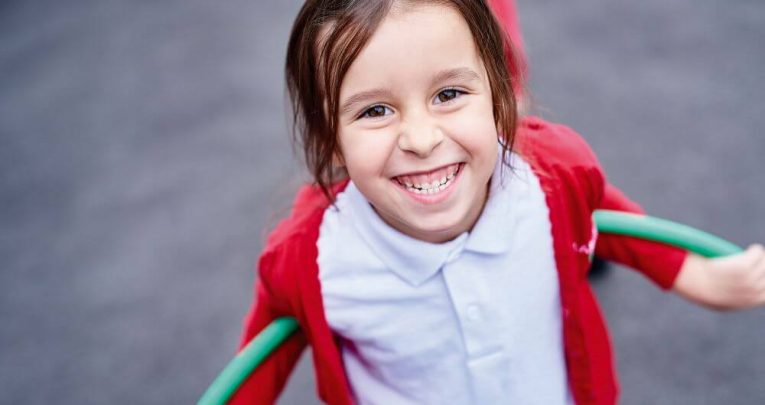Sentence building – Try these physical literacy activities

Practise new vocabulary and building sentences by jumping through literal hoops…

Language is very abstract. In early language development, children – particularly those with communication difficulties – can find putting words together in the right order difficult.
‘Jumping’ a short phrase is a great starting point for these children. This activity is a great way to practise new vocabulary during topic work or for children learning a new language. It’s also a useful way to introduce component parts of a sentence in a physical way.
Step 1
If you’re thinking about new fruit vocabulary, for example, give children the chance to first handle and taste some fruit while you introduce the different names.
Next, place a hoop on the ground. Alongside it present a range of fruit (alongside symbol and word cards) for children to select from. Now, in turn, ask each pupil to place a piece of fruit in the hoop. Starting from the left-hand side of the hoop, jump into it with the fruit and say its name.
Step 2
Place two more hoops alongside the first. In the first hoop place the word “I”; in the middle hoop place the word “like” (include symbols as well). Invite children to choose a piece of fruit to put in the third hoop, then ‘jump’ the phrase from left to right: “I like bananas!”.
Other pupils can clap the phrase. Repeat until everyone has had a turn.
Step 3
Next, use photographs or written names of children in the class instead of “I”. Ask, “What does Amy like? Who can remember?” Repeat the activity until every child has had their picture used: “Amy likes bananas!”.
The additional ‘s’ needed on words like “bananas” can also be a discussion point, if relevant to your class.
Step 4
Now add another hoop to contain a describing word. Discuss with the children where it should go – before or after the object? Use colour cards, colour vocabulary or other adjectives such as ‘soft’, ‘hard’, ‘fresh’ and ‘juicy’, depending on the work you’re doing in class.
Where possible, present objects, symbols and pictures alongside the words. Jump through the new sentence structure (“I like juicy apples”) and encourage spectators to jump on the spot or clap along. Use spare slips of paper and extra hoops to extend the sentences.
Step 5
Ask children to practise individually or in pairs. Remember to use real objects where possible, supported by pictures, words and symbols to make it multi-sensory. For children who are planning a sentence for writing, add full stops or other punctuation to hoops.
If you’re focusing on component parts of a sentence, colour code hoops and remind children through questioning: “What goes in the blue hoop?”. Repeat the activity back in the classroom with small desk-sized hoops and a bank of objects, pictures, symbols and words.
This can now lead to composing a visual phrase or sentence ready for writing.
Madeleine Fox is an educational writer and former SEN teacher.











